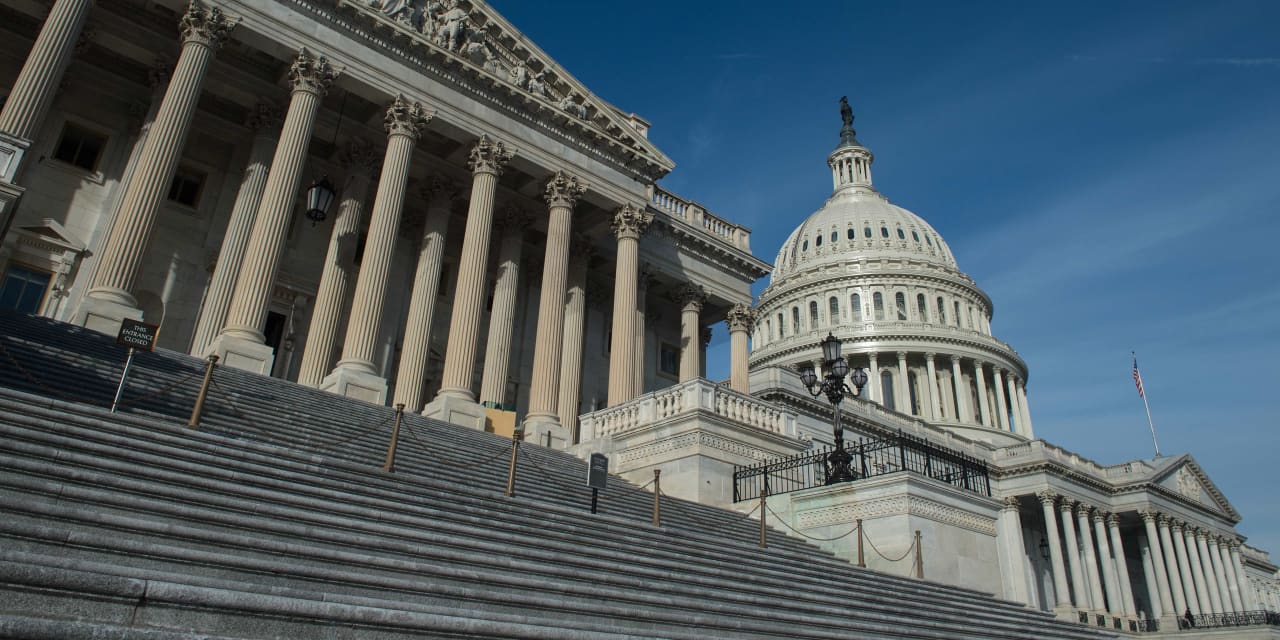Congress is considering a new bipartisan tax package that would expand the child tax credit and restore several business tax breaks, and the plan is to end a controversial COVID-era relief scheme to pay for it.
Here’s what you need to know about the employee retention credit, its short history and potential demise.
The program was created in March 2020 through emergency stimulus legislation that was aimed at preventing the collapse of the American economy as COVID infections surged across the country.
The program offered employers thousands of dollars per employee if companies could prove that the pandemic had harmed their businesses even as they were continuing to pay workers.
The ERC seemed to work well enough, so lawmakers expanded it in 2021, enabling more businesses to claim the credit and extending its end date. That’s when enterprising tax credit services companies took notice.
“The program has since become a magnet for fraud, with aggressive marketing by intermediaries offering deals to firms that may not be eligible for the tax break,” wrote John Buhl of the Tax Foundation, in a recent analysis.
Read more: ‘A life-and-death scenario’: These small businesses say they’re now forking over 100% of their profits to Uncle Sam
Last September, the IRS announced a moratorium on processing new ERC claims, after the cost of the program had ballooned to more than $230 billion, more than 4 times the $55 billion estimated when the provision was passed into law.
In December, the agency said that it had sent out an initial round of 20,000 letters to taxpayers notifying them of disallowed ERC claims. “With the aggressive marketing we saw with this credit, it’s not surprising that we’re seeing claims that clearly fall outside of the legal requirements,” said IRS Commissioner Danny Werfel at the time.
All these troubles make the credit an excellent target for lawmakers looking to find ways to fund other priorities.
Indeed, the very fact that the credit turned into a disaster that has cost four times what lawmakers thought it would when they passed it means that eliminating it scores significant budget savings.
The Joint Committee on Taxation estimated that limiting excessive payments related to the ERC would save $79 billion over 10 years and fully pay for the expansion of the child tax credit and business tax breaks for fiscal years 2024 and 2025.
The nonpartisan budget watchdog Taxpayers for Common Sense criticized the tax deal because clamping down on one wasteful program created by Congress to fund benefits for other taxpayers “is more fiscal sleight-of-hand than a sustainable solution.”
The deal “essentially reallocates funds from a COVID-19 relief measure rather than creating new revenue streams or cutting spending in a meaningful way,” the group wrote in a recent analysis.
“Such tactics, while immediately effective, fail to address the need for long-term, strategic fiscal planning,” they added. “By relying on the reallocation of previously allocated but unspent funds, Congress continues to sidestep the challenge of finding enduring solutions for funding new initiatives.”
It’s also a one-time source of revenue that can’t pay for these new benefits to be permanently extended, which is why the bipartisan Wyden-Smith tax deal only expands the child tax credit and business tax breaks for two years.
Maya MacGuineas, president of the Committee for a Responsible Federal Budget, argued in a recent statement that for this reason the deal “sets the stage for substantially more debt over time,” because it’s likely Congress continues to extend these benefits rather than let them sunset after 2025.
“We need to stop the practice of passing temporary tax and spending policies with arbitrary sunsets that exist only to hide the true costs,” she said. “Policymakers already face nearly $4 trillion of policy expirations at the end of 2025, and this package would lead this cost to grow massively.”
The bill passed the House in late January by a 357-70 vote, and now heads to the Senate, where analysts fear that it may well be ignored due to the upper chamber having its hands full with other issues and because of election-year politics.
Steve Pavlick, head of policy research at Renaissance Macro Research wrote in a recent note to clients that the need to fund the government ahead of early March deadlines, in addition to Republican aversion to passing a tax package that might boost President Biden’s reelection chances makes it less likely that the bill will receive the GOP support in the Senate needed to survive in its current form.
Henrietta Treyz, director of economic-policy research at Veda Partners, in a recent note to clients gave just a 10% chance of the bill passing the Senate.
“This year’s effort to pass a tax package has been more robust than the effort we saw in 2022 and 2023,” she wrote. Treyz added, however, that “the competing need to pass border reform and Ukraine [and] Israel aid, and general dysfunction in Washington keep us pessimistic that we’ll see a bipartisan economic-stimulus package come out of Congress this year.”
Read the full article here







